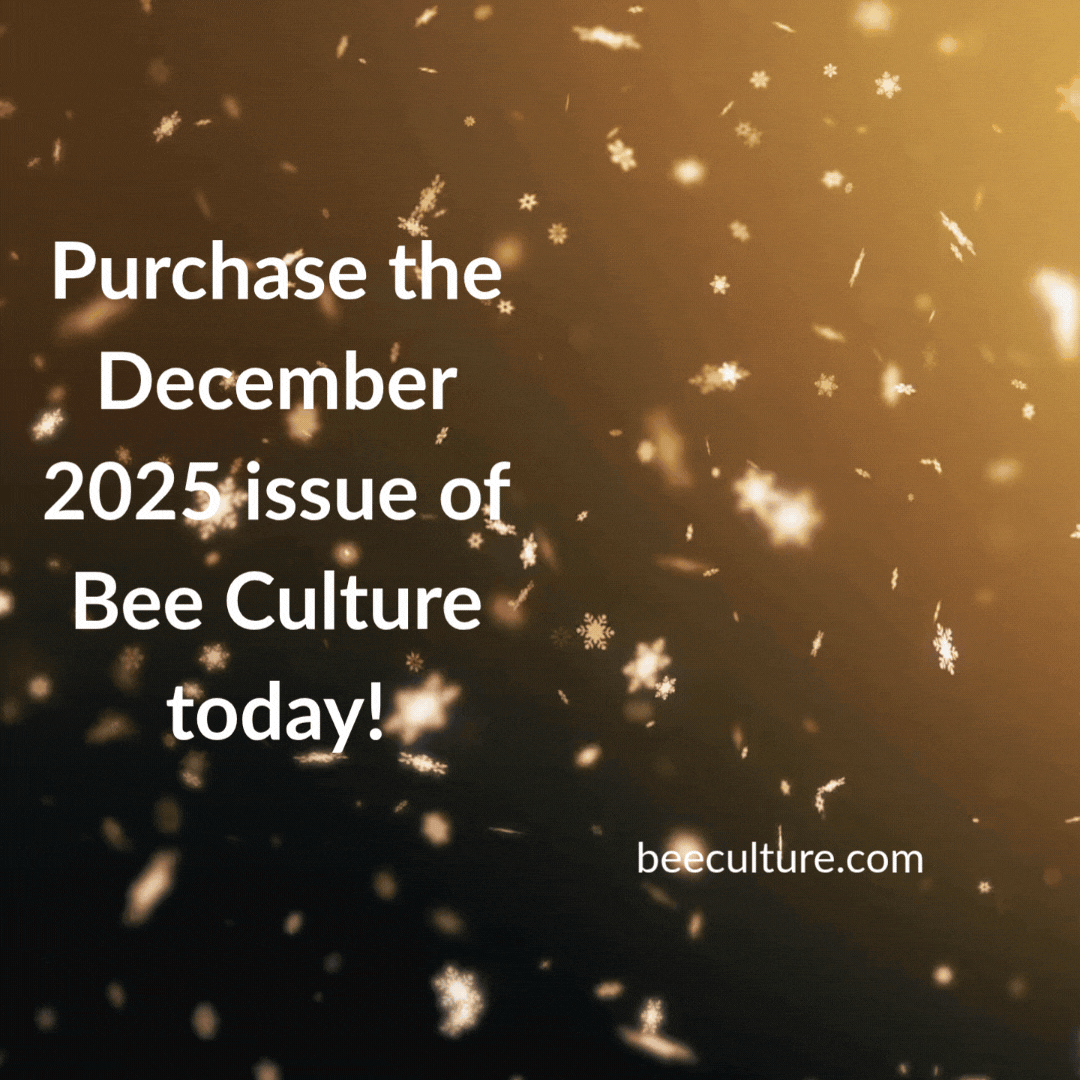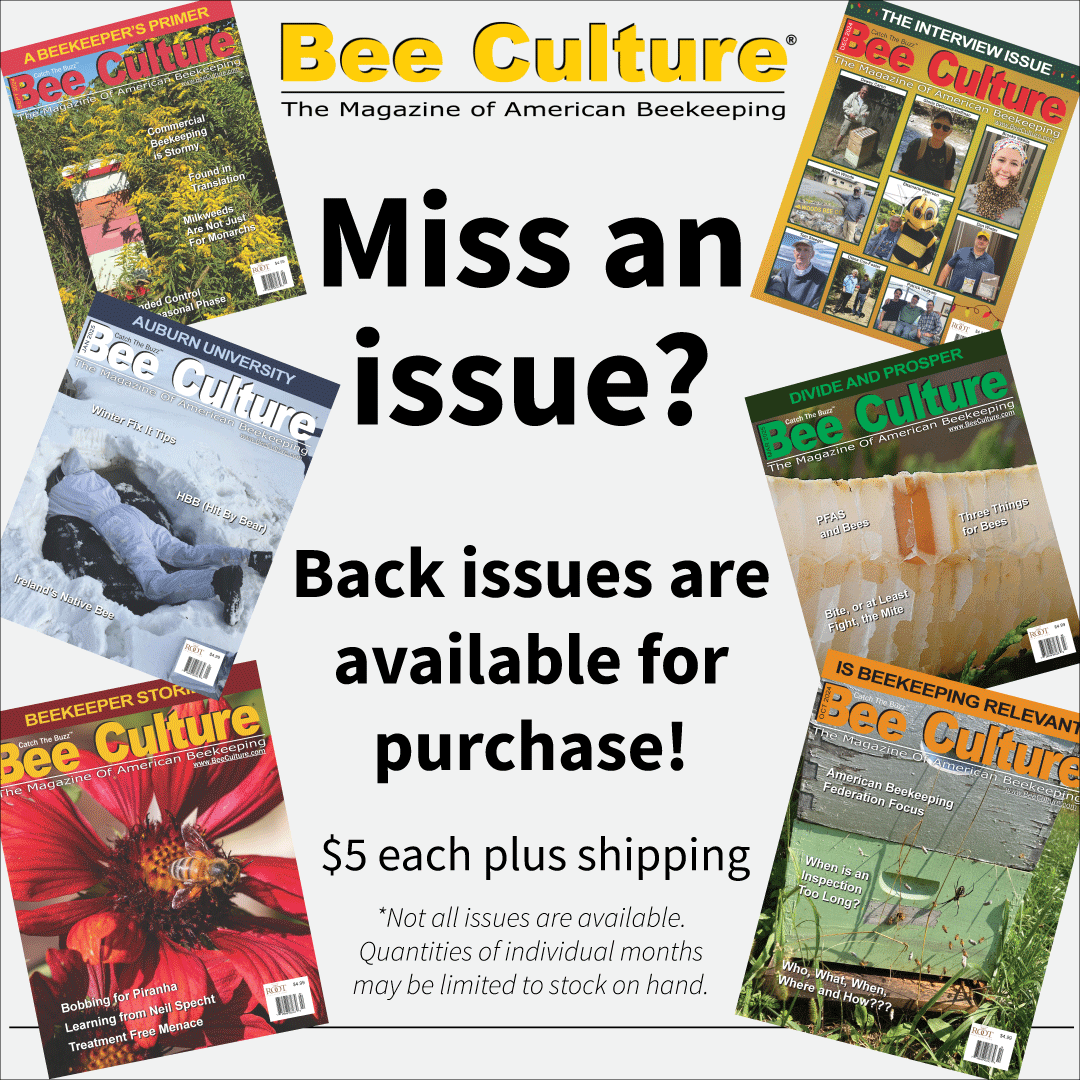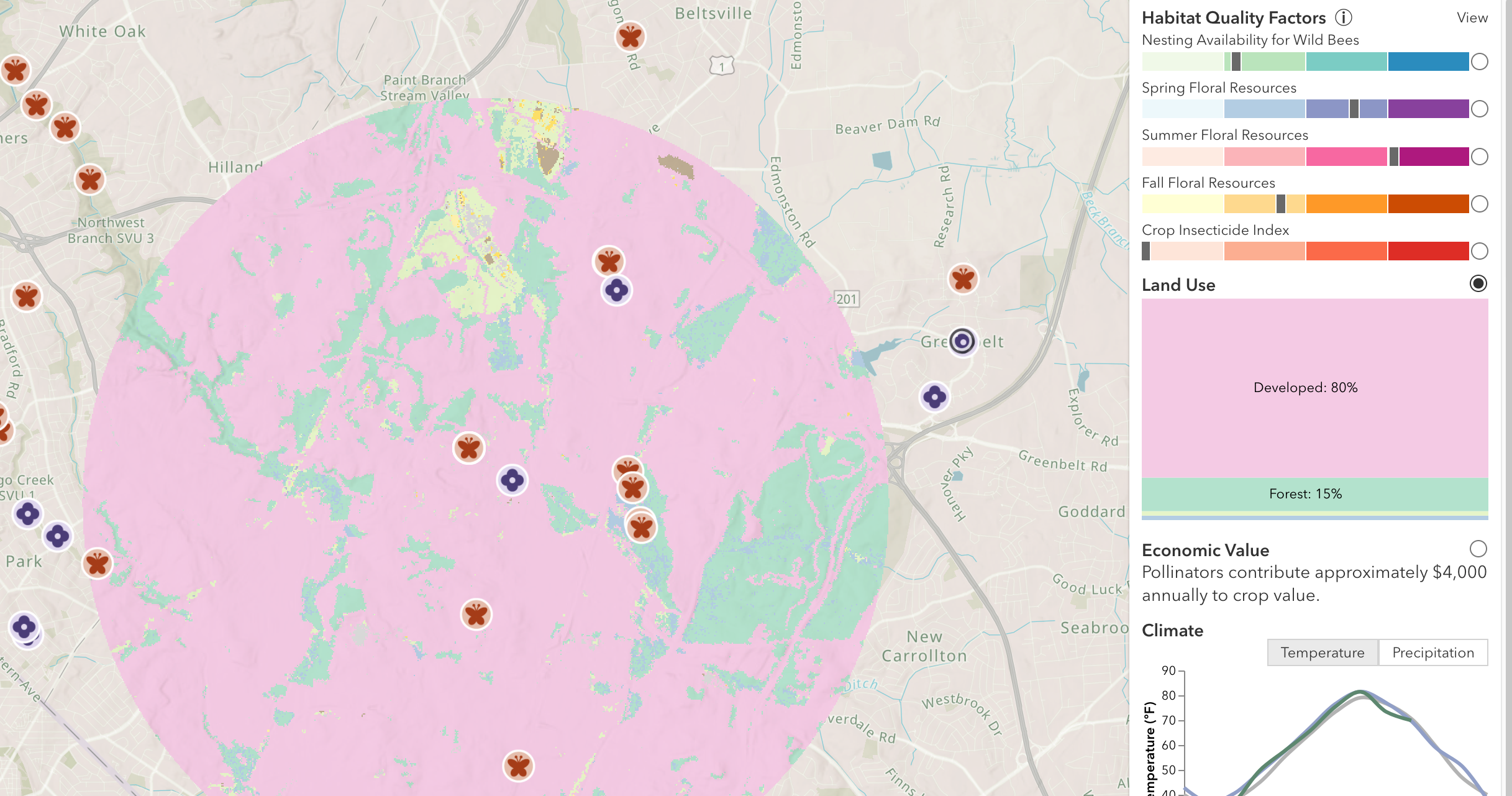Click Here if you listened. We’d love to know what you think. There is even a spot for feedback!
Read along below!
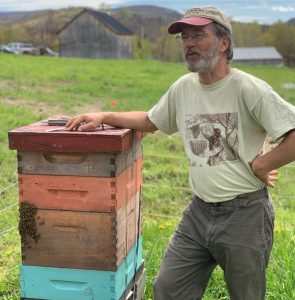
Radical Apiculture:
Honey without beekeepers and pollination without bees
By: Ross Conrad
It would be an understatement to say that I was disappointed to learn about MeliBio, the company that uses microorganisms and fermentation to create synthetic honey that the company claims is molecularly identical to real honey but without the need for bees. MeliBio promotes its products with the highly questionable claim that it is better for the environment than honey from bees, since according to the company, the beekeeping industry is responsible for the decline of native solitary bees. This is just one example of the modern radical trend of farming without farmers and producing food without farms.
The failures of industrial agriculture
It is understandable that we would want to change much of the way we produce our food. Today’s industrial fossil-fuel based chemical farming rejects the laws of nature. It encourages a paradigm of extractive, waste generating agriculture that leads to depletion and pollution of our soils, atmosphere and waters, and results in pesticide residue contaminated harvests along with centralized corporate control of the food system.
Far from being efficient, our industrial food system is actually the most inefficient food production system ever devised. Researchers have found that for every single kilocalorie of food produced, industrial agriculture uses 10 kilocalories of energy (Pimental and Giampietro, 1994). Most of the energy burned producing food results in waste and pollution. (Pimentel, 2009). The falsely ‘efficient’ model of modern agriculture obscures the true ecological footprint of production and uses externalities and subsidies to hide the true cost of production. Because of a single factor of production, the entire system is characterized as more ‘efficient’, even when the production system as a whole is incredibly destructive, violent and inefficient. Despite all the hype, industrial agriculture does not produce the majority of the food we eat even though world-wide it occupies over 70% percent of agricultural lands. Small bio-diverse farmers provide the vast majority of the world’s food, and do so working only about 25 percent of the land (Fanzo, 2017).
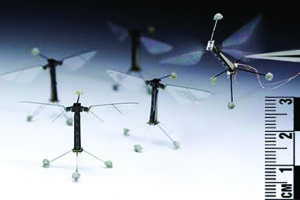
“Photo of robotic pollinator prototypes: RoboBees at rest and one (on the left) being held by tweezers with wings activated. Source: Wikipedia – Photo taken by Kevin Ma & Pakpong Chirarattananon, graduate students working on the RoboBees project.”
Today’s small farmers are being squeezed out of the food system by the industrial agricultural model. In the past 250 years we have gone from having about 90 percent of the U.S. population involved in farming, to less than 2 percent today. Rather than being primarily producers, today’s farmers are forced into relying on costly inputs, and are major consumers of expensive chemical pesticides, engineered seeds and farming machinery. Consumerism is encouraged with the false promise of increased productivity – a calculus that only accounts for output per unit while ignoring all the other products of production except the one that markets value most.
The evolution of Industrial Ag
The move to laboratory-produced foods like pseudo-honey is just one of the latest iterations of the evolution of the chemical-based industrial agriculture model that began with the use of pesticides and synthetic fertilizers during the green revolution. Then came the transition to Genetically Modified Organisms (GMOs). Genetically engineered life forms created in a lab are considered so novel they qualify for patent protection, but are considered so similar to normal biologically-grown food that they are deemed “substantially equivalent” by government regulatory agencies and therefore automatically considered safe and subject to minimum of regulation and testing. While it may be true that it is a sign of intelligence to hold two opposing ideas at the same time, it appears that it may also be true that it can be sign of greed and corruption.
Greenwashing
Artificial foods, be they synthetic honey, plant-based imitation meat or simulated milk are marketed as being beneficial for the environment and healthier for people. Although they are hyped as the answer to a decaying environment, synthetic foods manufactured in a lab through ‘precision fermentation’ are false solutions to ecological collapse. Rather than being eco-friendly, these foods are ultra-processed, utilize lab equipment and facilities that consume large amounts of energy (most often from fossil fuels), and will require ever increasing production of today’s genetically engineered row crops, and livestock raised in concentrated feed lots to provide it with the raw materials for their lab cultures. Laboratory manufactured food and farmless farming is a continuation of the fallacy that we can live and thrive outside of the earth’s ecological and biological processes.
The world needs bees for pollination and ruminants to help keep soils fertile though the addition of manure. Many of the environmental problems we face are caused or aggravated by our factory farming methods, not cows and honey bees. Everywhere in nature, ecosystems include both plants and animals. The plants feed the animals and the animals help the plants through the circular and multi-purpose nature of the ecological economy.
We break this circle to our own peril. For example, indigenous grains traditionally produced both straw for animals and grains for humans. Industrial agriculture interrupted this system and replaced manure with synthetic fertilizers. Indigenous plants that would not tolerate chemicals were engineered to do so. Straw for animal feed has mostly disappeared and replaced with grains primarily from genetically engineered soy and corn. Over centuries, cows evolved to eat grass, straw and hay, and when this is replaced with grain the disturbance to the cow’s metabolism and digestive system creates bovine health issues and excess methane emissions (Dijkstra, 2021; Wilson, 2019).
The digital revolution
Another industrial agriculture evolution that further entrenches its inefficient processes is the adoption of high-tech digital tools. Digitally collected data such as from drones, GPS and computer analysis only serve to remove food further from the web of life. This is also being falsely promoted as the climate friendly way forward (AIM, 2023). Such data driven ‘precision agriculture’ increases the centralization and corporate control of our food system. Meanwhile computer banks and advanced technologies further ingrain the inefficient use of expensive inputs and fossil fuel energy, while increasing the rate of climate destabilization and environmental decline.
Just like the synthetic food producers that require real farms to get many of the raw materials for their production, the claims that big data will feed the world ignores the fact that the data it uses is mined from farmers. This data is then processed through algorithms and sold back to farmers as another costly external input. Rather than agricultural knowledge being passed on through generations of farmers working close to the land and developing relationships with living plants and animals, data is making agriculture non-renewable by making food and knowledge a scarce resource that can only be acquired through high cost.
Data is not knowledge. Data has become a commodity that severs a farmer’s connection with the earth by outsourcing their knowledge to agribusiness. The chemical and seed corporations that morphed into a key part of the biotech industry, are now collaborating with big tech companies like Microsoft, and asset management companies like BlackRock, to consolidate digital, genetic and chemical control of food throughout the world.
The establishment of such alliances has led to the creation of organizations like Gates Ag One. Bill Gates is working to harness agriculture for the production of raw materials for laboratory derived food, not fresh wholesome food, grown and raised on living soil for local communities. The concentration of economic power through the merger of technology and finance increases the separation of food from its sources of seeds, soil, water and the creative knowledge of small farmers who are dedicated to caring for the land and animals they steward. Data based farming separates us from the generations of farmers whose knowledge and wisdom is rooted in experience, care, experimentation and a love of their livestock and the land. Rather than enhance food system resilience, external inputs, outside control, monocultures, uniformity and centralization produce instability, vulnerability and an unsustainable food system prone to failure.
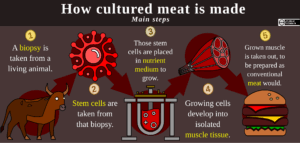
“Diagram depicting the basic steps used to create synthetic foods like cultured meat. Source: Wikipedia / Kaasterly – Creative Commons CC0 1.0 Universal Public Domain Dedicaiton.”
Apiculture no exception
Beekeepers have been paying the price for the industrial agricultural model for years. We are told to move our hives when pesticides are being applied nearby making us responsible for the off-target impacts of chemical pesticide applications rather than the pesticide industry. We’re expected to provide alternative forage and costly nutritional supplements to help mitigate herbicide use that reduces forage availability and quality. As beekeepers, we absorb colony losses year after year without compensation even as ample evidence indicates it is not varroa, but pesticide chemical pollution that is behind the majority of today’s colony losses.
Beekeeping is headed down the same dystopian path as the rest of Big Ag. Instead of ensuring bees have high quality nutrition and a chemical free environment so hives are healthy enough to naturally fight off disease, we are now encouraged to vaccinate our bees. Rather than regularly inspecting colonies to evaluate their health and fitness, beekeepers are increasingly relying on digital equipment to monitor temperature, humidity, colony weight and hive sounds to determine the hive’s status. Such techno-fixes are promoted as ways to enhance colony lifespans and maximize honey production, when what is really needed is toxic-chemical free foraging areas and a stable climate. Instead of allowing colonies to build comb naturally, we use pre-fabricated combs made from synthetic beeswax. Rather than get serious about resolving the root causes of the dramatic spike in honey bee losses of recent decades, we are surrendering our responsibility for the natural world and are substituting the gifts of the honey bee with synthetic honey and miniature drone pollinating machines.
Competing world views
As beekeepers and farmers, we can view ourselves as either separate from nature, or as an integral part of it. We can think of nature as either alive, self-regulating, self-healing and self-regenerating, or as dead, raw materials and resources for industrial input. One perspective reduces food and food production to a list of constituents and inputs while the other values the quality, source and the way food is produced. These are the two paradigms that shape our two systems of agriculture: the reductionist thinking of chemical/industrial based agriculture, and ecological/biological farming based on inter-relationships. These two ways of thinking also greatly influence our approach to climate, food and health issues.
Lots of evidence suggests that the widespread adoption of fossil fuel based industrial agricultural techniques is systematically destroying the life support systems of the planet. So, I remind myself not to buy fake lab manufactured foods, to seek out foods produced without toxic chemicals, GMOs and robotic pollinators, to continue to improve my personal beekeeping skills and reject the use of digital crutches, to do my best to support small scale local organic, biodynamic and permaculture farmers, and to remember the words of Ethan Tapper, who wrote “what is truly radical is to do what is necessary to build a better world.”
References:
Agricultural Innovation Mission for Climate (2023) AIM for climate summit 2023 opens with new agricultural initiatives, BioNews May 9, 2023
Dijkstra, Jan (2021) Changing the cow’s diet reduces methane and nitrogen emissions, Wageningen University & Research
Fanzo, Jessica (2017) From big to small: the significance of smallholder farms in the global food system, The Lancet Planetary Health, 1(1): e15 – e16
Pimentel, David (2009) Energy inputs in food crop production in developing and developed nations, Energies 2(1):1-24
Pimentel, D., Giampietro, M. (1994) Food, land, population and the U.S. economy, Carrying Capacity Network 1994
Tupper, Ethan (2024) How to love a forest: The bittersweet work of tending a changing world, Broadleaf Books, Minneapolis, MN, pg. 2
Wilson, Jena (2019) Reducing the carbon footprint of cattle operations through diet, Institute of Agriculture and Natural Resources, University of Nebraska-Lincoln


